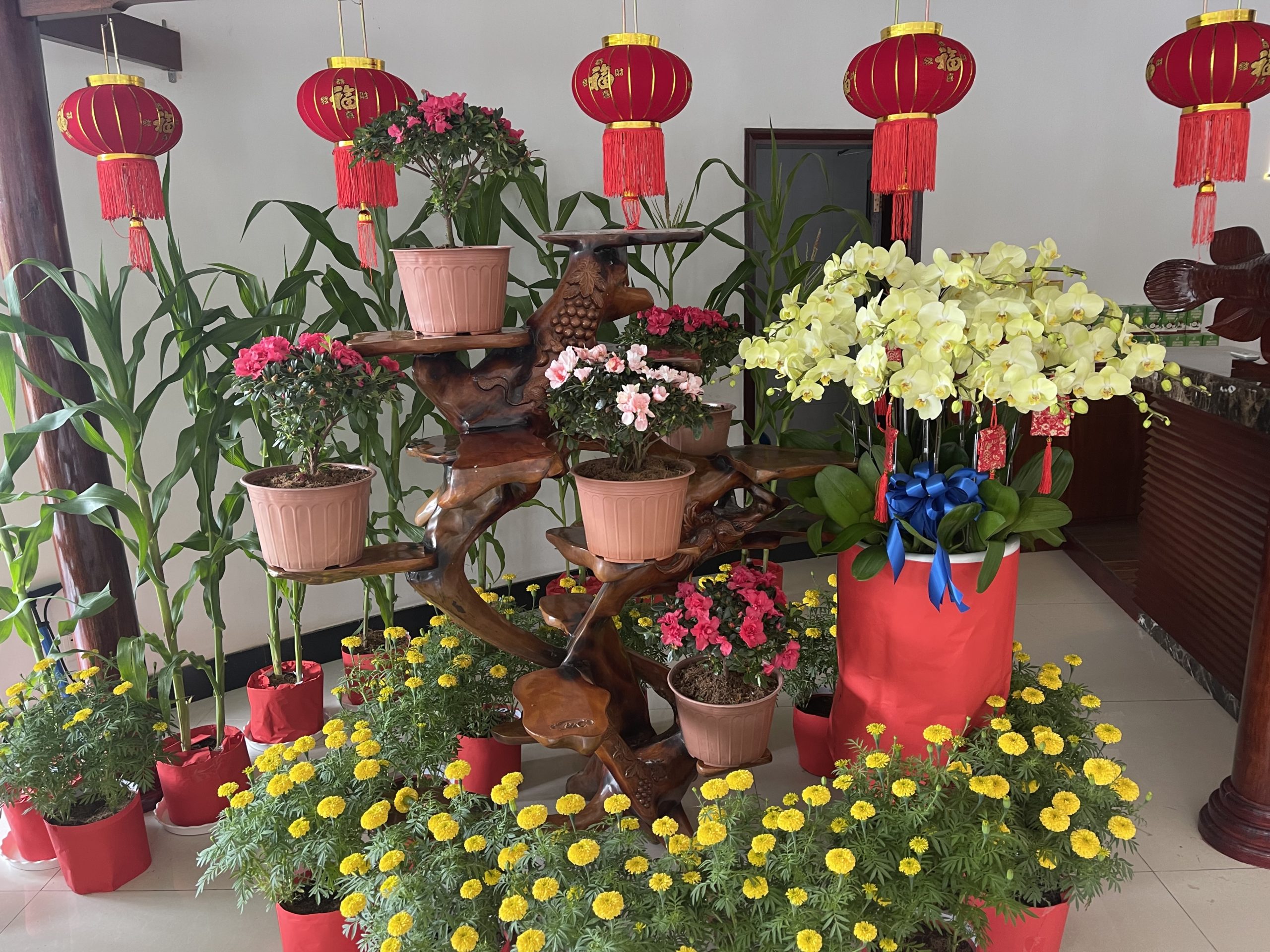Have Questions? We have answers.
Contact Us

Tết celebrates the beginning of spring and is one of the most important cultural festivals in Vietnam. It is one of the most colorful celebrations in Vietnamese culture, and I’m very fortunate that my Fulbright Scholar program aligns with the holiday. There is excitement and energy in the air that is unparalleled to any festival I have been to, as the Vietnamese prepare for the holiday. This includes preparing decorations (gold or pink apricot trees or orange trees), deep-cleaning homes and offices, and buying/cooking various fruits, sweets, and cakes, and gifts. Children enjoy receiving red envelopes filled with money and gift-exchanging includes: elaborate gift baskets, fruit, candies, and cakes. It is also a time for ancestor worship and visiting temples for good fortune the upcoming year.
Traditions and customs vary by region. The first day of Tết (this year it is on Sunday, January 22) is generally reserved for family, followed by friends’ visits on the 2nd day, and teachers on the 3rd day. Furthermore, it is generally believed that the first visitor who enters one’s house determines one’s fortune for the upcoming year. Additionally, extensive cleaning is done before the holiday, including extensive sweeping in advance of the holiday (to sweep away the challenges of the previous year), and no sweeping is done during the holiday in order to not “sweep away one’s good fortune.”
In business, Tết marks the end of the year. On one hand, colleagues are looking forward to ending the year to visit with friends and family. On the other hand, it is a frenetic time, as many work to complete projects, finalize any debts, and complete project timelines. Markets and retail are busy. Many corporate brands (e.g., Coke, Heineken, and others), utilize Tết for Tết-related product designs, packaging, and product displays in storefronts. There is also an increased presence of Tết products and floral displays at markets; the floral markets are bustling.
For tourism, many Vietnamese return to their cities and villages to visit families, and there is an increased supply of internal tourism travel options, including more plane and bus routes (even throughout the night). Most cities, including restaurants and stores, shut down for a few days (typically Sunday, January 22 – Tuesday, January 23). For example, on the day I write this post (Saturday, January 21), only a few coffee shops, convenience stores, and fast-food restaurants are open.
I have talked to many colleagues who now use the time to travel abroad, and several colleagues will be traveling to Egypt, China, and South Korea this year; I expect this trend will continue in the next few years. For international tourists visiting Vietnam during this time, it provides an opportunity to see urban cities empty, offering a contrasting view of bustling urban areas; however, many services are closed. International tourists who do travel during Tết should work with a tour operator well in advance in planning itineraries.
Chúc Mừng Năm Mới/Happy New Year!



